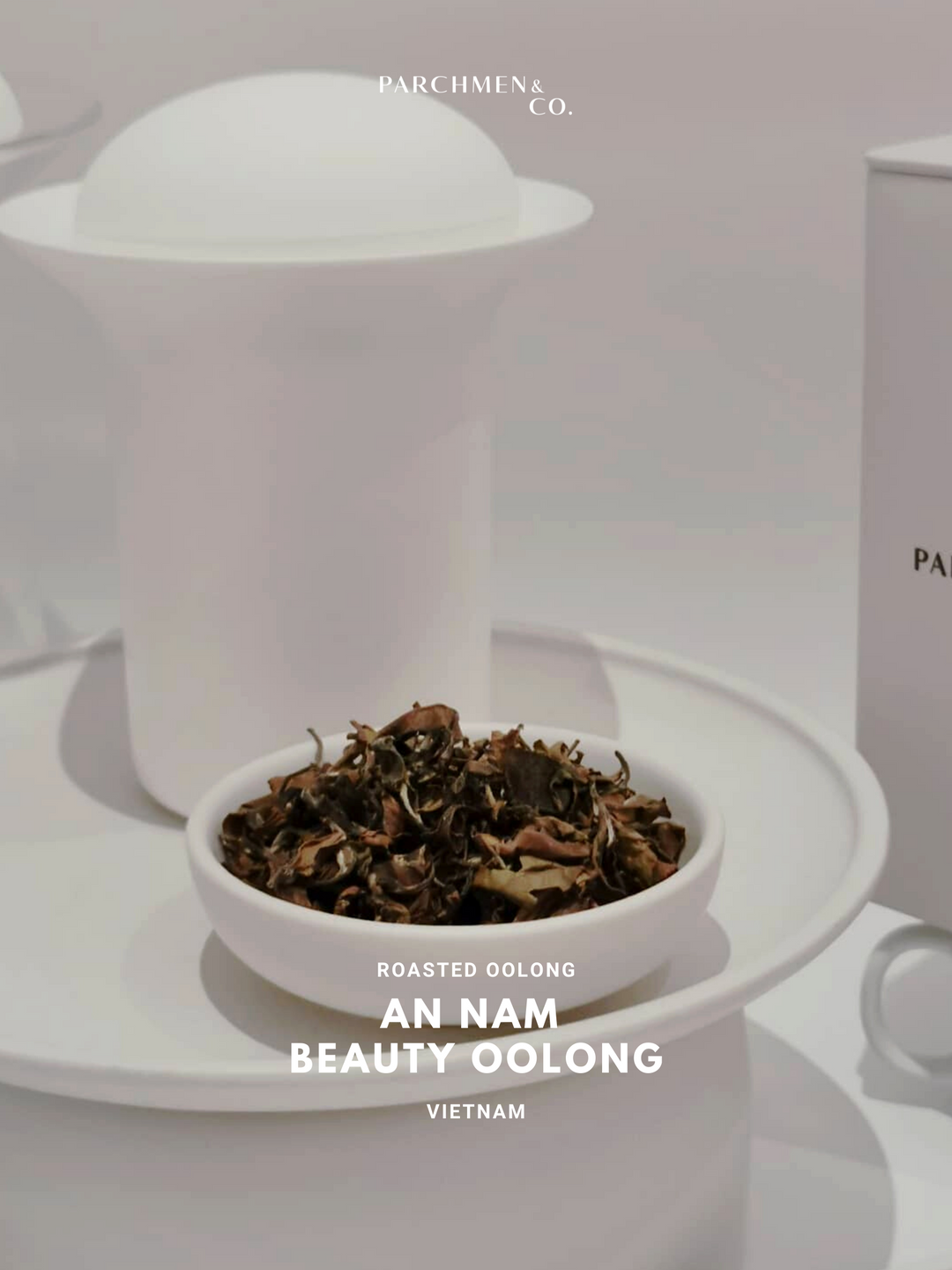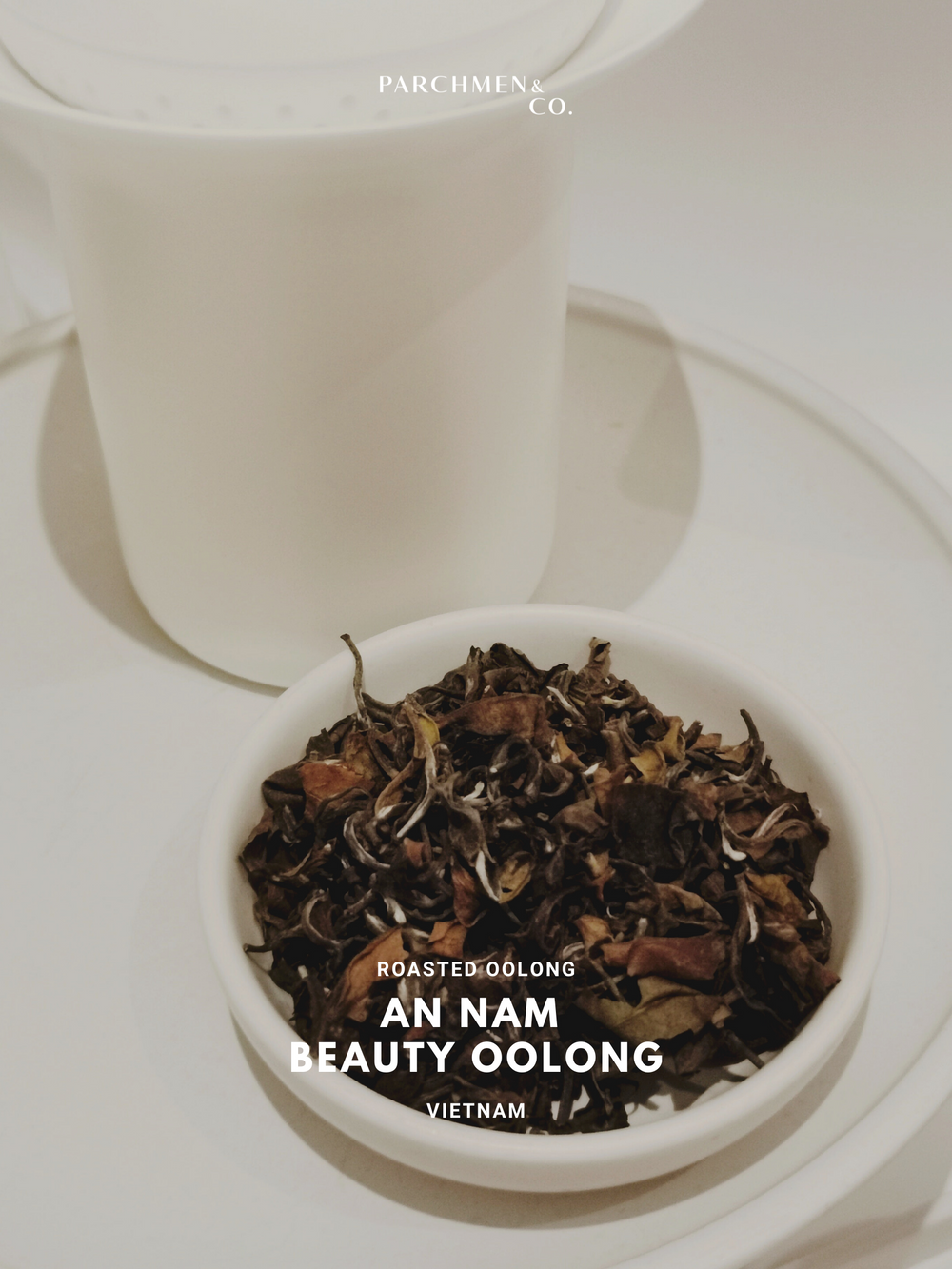2024 Vietnam An Nam Beauty Oolong Tea
- In stock, ready to ship
- Backordered, shipping soon
Vietnam is 75% low mountains and hilly regions, with elevation lower than 1,000m. In the north, there is the Northern Highland with the Red River Delta. The highest peak of Fansipan (Phan Xi Păng) at 3,143m lies here. In the south, there is the Mekong River Delta. In the middle is the Central Mountains, this being part of the Annamite Mountain Range that extends from Tibet and Southwest Yunnan through the length of Vietnam, ending in the south at the Mekong River Delta near to Ho Chi Minh (Saigon). The mountain range is named after the Chinese name for Vietnam given by China since the 12th till the 19th century. Located at the south of China, An Nan (安南) carried the political wish for stability and peace in the south of China.
Our tea comes from Hoa Binh province to the north of Vietnam on the southwest of Hanoi. It is a mountainous province as an extension of the Northern Highland. Its name has its roots in Chinese, meaning "peace" (和平·). Considered as a cradle of ancient Vietnamese culture, it features rolling mountains, hot springs and rice terraces. The province enjoys comfortable temperatures ranging from 16°C to 28°C, and rainy season for about half a year from May to Oct.
This beautiful Vietnamese tea is an ode to Taiwan's Oriental Beauty wulong tea (东方美人茶) which has a history that traces back about 150 years. Departing from its former self when tea picking standards was yet definitive, today's Oriental Beauty teas focuses much on fine picking. It uses only the leaf bud and two leaves. This again departs from the modern methods of making traditional wulong which uses bigger leaves further down the stem from the bud. The reason is that these wulong teas undergo roasting, while the Oriental Beauty is not roasted. Fine picking offers more elegance in a flavour profile resembling that of red teas and is less bold in character. It also resembles the red tea in its oxidation level - heavily oxidised as evidenced by the fully pink leaves after the brew.
A very unique and charming tea made from the material in the organic tea garden in Hoa Binh province, each batch is only 2-3kg. This tea was grown without insecticides to encourage a common pest - the tea jassid - to feed on the leaves. This leads to the plant's defensive production of monoterpene and hotrienol which gives the tea its unique flavour. Made entirely by our friend the tea master and his wife, from picking to rolling to firing, it is loosely rolled, giving it a bigger volume. The dry leaves present a spectrum of colours, indicating the different levels of oxidation naturally leading from the different sizes (and growth cycle, i.e. age) of the leaves going into making it. Its buds are a mix of golden and white, un like the typical Oriental Beauty, perhaps due to higher oxidation levels from the warmer local climate.
Brew Flavour
We are brewing this tea in our Parchmen Glass Gaiwan, at 3g to 120ml. You can brew at three different temperatures to try the flavour. At 80°C, we brew for 1 min. At 85°C, we brew for 50sec. At 90°C, we brew for 40sec. The flavour builds up with higher temperature. At 80° and 85°C, it smells like honey with a hint of caramel and longan, and the 85°C brew is sweeter and has a longer afterflavour. At 90°C, it becomes roasted almond and walnuts in the brewed leaves, which curiously turn into deliciously fruity notes of longan and honey in the brew. Reminding us of ching teng dessert popular in Singapore, the brews across different temperatures produce syrupy and sweet brews, elevated as the temperature increases. It has a slight throat resonance (喉韵).
We also included this tea in our Nov 2022 tea box. Read about it here.
Packed in 50g loose leaves in tea caddy.










